Children and Squat Toilets: Everything you ever wanted to know and a whole stack of things you probably didn’t
On more than one occasion (i.e. two occasions) I have introduced the child of a newly-arrived expat to the ways of the squat toilet. Usually this is because squat toilets are less popular in Singapore than western-style ones and therefore more likely to be available at short notice, and said child has given us really, really short notice.
We’ve had enough practice to forge on without a pause. Here’s how we’ve taught our kids the secrets of the squat at each of their precious developmental stages.
Older Children (from 3 to 5 years and older)
These kids are old enough to master the Asian Squat:
…which P has been good with since he turned four, but which the more locally-bred T can do at two and a half. Add a pair of waterproof, non-slip shoes (in order to stop this happening {video} ) and advise the youngster to remove their underpants and trousers completely and hold them tucked under one arm.
Make sure they know to face the same way as usual (the door, except for boys urinating) – their bottom should be towards the back, over the drain – and everything will work out just fine, plus or minus a short hosing-down of the cubicle for beginners.
Eventually they’ll be able to swap total-pants-removal with a slight drawing-down and your job will be complete.
Updates: At Suitcases And Strollers they give a bit more detail on how to tell your kids to pull down/hike up their pants so that everything is around the knees and not the ankles or bottom. (They also recommend skirts.)
And Elle at Life In Japan with Toddlers complains of the difficulties of getting a toddler undressed whilst keeping everything off the floor. I agree, and we both usually undress and re-dress our youngsters outside the cubicle and send them in half-naked except for the non-slip shoes. P is getting a bit old for this, but can handle his clothes better (plus he’s a boy). Any other solutions, let us know.
Toddlers (2 to 5 years)
For the child who is too young/inexperienced to squat independently, there’s the supported squat. If you attended one of those hippy childbirth classes you’ll know just what I mean. For everyone else:
Note that the supporter should be positioned BEHIND the toileting child. This is very important. Trust me – I know.
Early Toddlers and Babies/Very Anxious Children
For the real youngster (or very nervous), I recommend the baby dangle. Camping parents, early toilet communicators, people who don’t like to carry potties or toddler toilet seats everywhere, and human swings will be familiar with this one:
For heavier children, continue to support them with your hands around their thighs, but lower their feet to the ground so they’re bearing some or all of their own weight:
I use the one-handed low dangle for cleaning up afterwards:
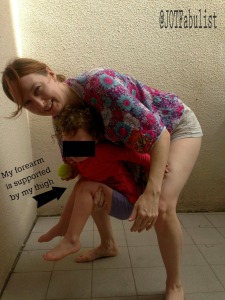
At T’s current weight, this is no fun for either of us, but no phrasing I could think of for “Can I please borrow your small toddler for a squat toilet blog photo shoot?” sounded right.
…unless I’m using toilet paper and can stand the child to one side.
No Toilet Paper?
Of course you have toilet paper. Anyone who cares for kids always has tissues and baby wipes on hand. But if you see a little hose or a bucket with scoop you can have a toileting experience which is not only culturally enriching but wipe-saving as well.
DO NOT ALLOW YOUR CHILD TO USE THE HOSE THEMSELVES. Or at least don’t allow my child to use the hose, and if you do, don’t say I didn’t warn you. I’ll let Lee from Riding Effortlessly On A Large Green Turtle explain you the rest, but the short version is you use water and your fingers.
If you do BYO toilet paper or wipes, note that in many places you can’t flush them without clogging the system. Look for a small bin instead.
No Flush Button or Chain?
Based on previous experiences, I suspect not everyone knows this, or at least that’s how I charitably explain it when presented with an un-flushed, uncisterned squat. If the toilet doesn’t have the usual mechanisms, pouring a bucket of water manually into the bowl works just the same (but awesomer, according to fascinated five year olds everywhere).
And that’s basically that. Not daunting at all, especially considering how much bodily waste your child no doubt shared with you as a nappied infant.
As always, if I missed anything or you do it differently, just say so!
Related:
Still confused about the squat? Chang Mai Climbing Adventures will (literally) draw you a diagram.
Not sure whether your traveller is adequately toilet trained to ditch the nappies on holidays yet? This post helped us decide what to do.
Also: more tips on travelling with kids!
The post Children and Squat Toilets appeared first at Journeys of the Fabulist.
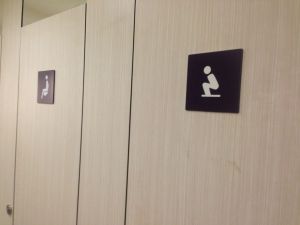
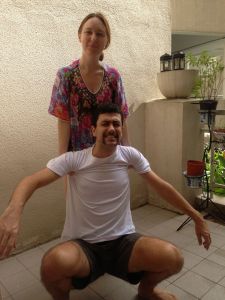
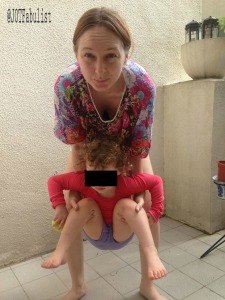
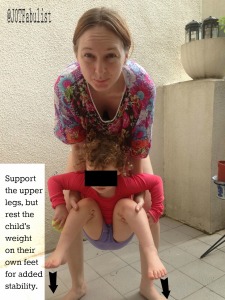

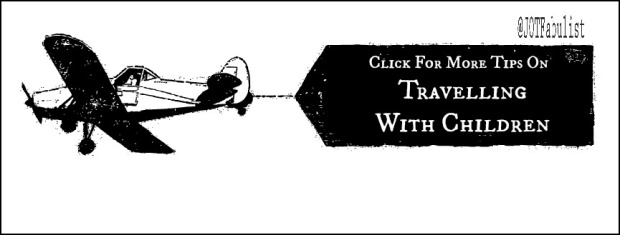
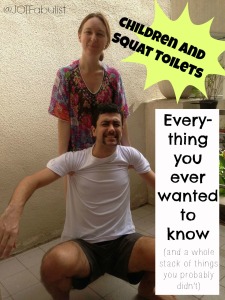









i wonder if this post is open for comment.IN my country people generally have the western like w.c toilets but we happened to move to a house with a squat pan..my baby was 9 months then and now she is 17months..i want to begin potty trainingwith a regular potty for babies but eventually she will have to transition to big girl toilet..
Am glad this post has given me insights because i bet by the time she is 2.5 or 3years i will be able to hold her up as she poops. I have looked around for trainer seats but i can only get the western like trainers and none for a squat pan.
But thank you again for this post..sorry for the loooong comment 😀
LikeLike
Thanks for dropping by and letting me know you found something useful here!
LikeLike
Oh the joy! Love the post though.
LikeLike
Thanks! And yes, the joy… I see we both know of that stuff…
LikeLike
Pingback: Dos and Don’ts of Travel With Small Humans | Mummy Spits the Dummy
You are amazing. Thank goodness Roo hasn’t needed to go number 2 when there was a squat potty.
LikeLike
I’m sure he’d be fine. Although it is easier there if they can hold themselves up without too much support…
LikeLiked by 1 person
In some of the ones I’ve been in, in China…I threw up. I guess, I’d be throwing up and holding them up to poop? 😉
LikeLike
Two birds with one stone! Multitasking like a mother.
LikeLiked by 1 person
It would’t be the first time I threw up while taking care of my little ones.
LikeLiked by 1 person
Pingback: Five family travel bloggers you should be reading | Bubs on the Move
I think I might just stay home!
LikeLike
As a mother of 2 kids who recently moved to a country where we get to experience squat toilets on a daily basis I just love this article. It could not be more informative, more hilarious and just brilliant. So glad you stopped by my site to comment on my post. I just found my new favorite blogger. You rock!
LikeLike
Huh. Wow! Now that’s pressure to live up to. 🙂
It’s very true these are some of our favourite and most practical toileting tips. We have used them over and over!
LikeLike
This is hilarious, and yet very informative! Thank you! We are in Turkey now with our three children (6,5,and 2). We’ve had a hard time with the Turkish toilets, This will help me a lot! 🙂
LikeLike
Hope it does! It’s definitely tried and true stuff!
LikeLike
Another reminder of why I keep up with bending and squatting yoga positions. You never know when that sort of flexibility is going to come in handy!
LikeLike
Yes! True. And if you’re ever helping a child with it, you’ll be thankful for the arm-building bits as well.
LikeLike
You’ve got me laughing out loud!
LikeLike
No one and nothing prepared me for squat toilets in Israel—we stayed–this is a long time ago now—in a private house that “:Let Rooms” in the Arab Quarter in Jerusalem. I had NO idea what to do or how to do it. And there was no lovely “white porcelain”–just—rock and tile. No TP; No hose; if there was a bucket I don’t remember it. The water just sort of–sat there. Have no idea where it went and how it got there. Loved the gorgeous domed stone house but—–
The pee part was—ahem–OK but for the rest we discovered that American Express offices had lovely Western style bathrooms. I am sure we were not the first tourists to do this!
I was also completely shocked to hear from a Hostel staffer while waiting for a MALE member of our party that he was having a “douche”–naive American girls only heard THAT word whispered in the locker rooms and never in conjunction with BOYS. No one ever thought that it could mean someone was having a SHOWER—-
The rest of the country had “regular” Western style toilet rooms.
We are now potty training our 3 year old grandson and I cannot imagine trying to explain this whole thing to him! Or the expression on our 7 year old grand daughter if we proposed this to her!
PS—Don’t do the “half squat”—my sister used to do this in EVERY rest room not her OWN or her parents and got seriously sick from not being able to empty her bladder completely. She later moved to Thailand and I can just IMAGINE how she dealt with things there!
And “holding it” isn’t great either—it can contribute to kidney stones and other urinary and colon ailments.
That said–I now have some “issues” due to surgery and cannot imagine traveling to some of these places either!
LikeLike
Yes, some squat toilets are definitely fancier than others. Luckily you can find nice toilets in most tourist destinations these days, if you know where to look.
Good points about half-squatting and holding on. You definitely don’t want to retain anything for later or you could end up with nasty problems!
LOL about the language confusion as regards showering. 🙂
LikeLike
That’s a good post. Maybe I’ll write about my public restroom issue.
LikeLiked by 1 person
If you do, make sure to tell us where 🙂 .
LikeLiked by 1 person
Kerry at kerryswindingroad asked me to guest post on friday. You will find the story of my neurosis there- May 2.
LikeLike
Alright! Thanks 🙂
LikeLike
Oh. My. God. This is more horrifying to me than a horror movie. I can’t even pee in a public restroom if there’s someone else in the room, let alone squat, or remove my undergarments or whatever the requirements are. GOOD GOD! It’s like the texas chainsaw massacre of bathroom information. I can never travel now. That’s it, I just have to stay in north america for the rest of my life, because if I ever came across one of those, I’d have to hold it until we got home. My bladder would explode.
LikeLike
Disclaimer: western style public toilets are disgusting too. By nature. I often have to hold it till we get to a private restroom here… Yes, I am aware that I have a problem.
LikeLike
Haha! Yes, I have a friend that can’t go on any form of transport. Makes long-haul flights interesting… Sometimes it doesn’t pay to have high standards when you’re travelling!
I will say it’s often easy to find nice, western toilets if you stay to the popular tourist routes, though, even in countries where squat toilets are the norm. Don’t let it put you off too much!
LikeLike
Oh, it doesn’t put me of at all. It panics me to the point of near psychotic breakdown. But I’m sure it’ll be fine, I’ll just kindly ask everyone else within a ten yard radius of the bathroom to leave. No problem. OMG, They’re going to commit me.
LikeLike
🙂 . I wonder if anyone does public toilet therapy for wanna-be travellers who are held back only by their fear of toilets? You know, like fear-of-flying therapy?
LikeLiked by 1 person
I’d totally do it. I can’t even pee if there’s somebody outside the bathroom who might hear me pee… I’m aware I need help.
LikeLike
Ok, I’ve got the answer. You need to travel to Japan. Stick to major metropolitan centres, such as Tokyo where the toilets have a “white noise” button to cover up any noises.
??
LikeLiked by 1 person
That would totally work for me. Except I might have trouble because hitting the button means I have something to hide… I dunno, it might work. I would still probably have to wait till everyone left the room. And then use the white noise button. I never really know when my brain will let me pee. I do know, for certain, that port-a-potties are out. Always, all the time.
LikeLike
🙂 It’s nice to have certainties in life!
LikeLike
The toilet hoses are one of the main things I miss about Asia. They’re especially useful for washing out poopy diapers before throwing them.
LikeLike
True! And have you seen them being sold by cloth nappy people? Definitely good for giving things a hose off.
LikeLike
LOL, A great write up for parents. Since I don’t have kids, I usually don’t think about writing this kind of advice.
I would share an interesting story, an old China expat once told me that the greatest dilemma he ever faced in his life was how to use the old Chinese public toilets. This was the early 90s, and modern construction has not spread to most of the Chinese public space. Therefore, old Chinese public toilets are either Roman style (a line of holes where you can sit and gossip about the latest with your neighbour in the next hole), or 2 (or 3 or 4) rows of ditches. The most difficult decision of his life, much more difficult than choosing a job, asking his wife to marry him, etc, was to decide where he should face when he squats over the ditch. Should he go face first or arse first? If he goes arse first, than everyone coming in using the next ditch will be staring at his arse. If he goes face first, then he will do the same to others’ arses. I leave it to your imagination on what he chose to do.
An expat life is always filled with unintended monumental decisions, and plenty of plan Cs or plan Ds before we even gone past plan As. Keep up the good work.
LikeLike
LOL, I’ve used those sorts of toilets and although I’ve found it odd to have someone strike up a conversation with me when I’m midway through my ablutions, I’ve never really thought about which way to face. Or heard them described as Roman-style – makes them seem very classy and even romantic.
They are certainly not romantic.
LikeLike
Romantic, huh? 😛
If you are interested in what it looks like, you can google Ancient Roman public toilets for pictures. And yes, China still used those kind of toilets (developed thousands of years ago) even in late 80s and early 90s, it does, however (along with the ditch style), makes it easier to clean and easier for “night soil” collectors to do their jobs. (as in collecting it for something else *cough*)
As for the ditch style, there were no stalls/or walls separating the sections of the ditch to create individual stalls. The walls were considered a luxury that only wealthy cities or major public locations can afford.
In one sense, it is technically more sanitary than toilets, especially for boys, since there is no skin contact. In that sense, the western portable toilets are quite bad, and isn’t a happy memory I care to recall. There is also less chance for people to get hemorrhoids. Of course, that doesn’t make adapting to them any less easier. 😛
As for the western public toilets, the most memorable one was the automatic one I saw in Paris, where you have to pay (3 Euros) to get in and if you aren’t done in 15-20 mins, the door opens automatically.
LOL, definitely not a dinner table conversation, but it’s one thing we can’t live without, and yet it’s one thing most new expats don’t consider. Let’s hope everyone can find their toilet paper in time in their lives.
LikeLike
Isn’t the internet wonderful? This type of information is so hard to come by otherwise. You need to meet/know people who have been to SE Asia AND have worked it out AND are comfortable talking about it. It is a shame they are getting rid of them, because apparently it’s a much healthier way to ‘do your business.’
LikeLike
Yes, I’ve heard that, although I confess the western-style ones are a bit more comfortable and foolproof and I usually prefer them myself, so I can see where people are coming from.
Still, it’ll always be a useful skill for that by-the-road gotta-stop.
LikeLike
Too funny, very professional posing. Especially from your husband. I applaud him for being so good humoured about it. It’s great to squat! Has health benefits… From a yogic point of view 😉 when your little ones grow up and if they start yoga classes, they will be more open in the hips than others who didn’t grow up squatting. Being an efficient half squatter also saves your ass from touching disgusting toilet seats!!
LikeLike
I guess that makes sense – it must stretch everything slowly and gently.
Good point about touching toilet seats, too. To be honest, I’ve done a half-squat over a few of the more disgusting western-style toilets in the past.
LikeLike
This is a GREAT guide (love the photos). We encountered squatty potties in South Korea and Italy. With boys that already use the potty, #1 was no problem. But sheesh, I would not have known what to do with the bucket/sprayer if we needed to use it…
LikeLike
See, Italy is another place I wouldn’t think of when I think of squat toilets.
But isn’t it easier to have boys at certain times? 🙂
LikeLike
It was a surprise to me as well to find them in Tuscany (http://thriftytravelmama.wordpress.com/2013/10/09/is-tuscany-kid-friendly-the-good-the-bad-and-3-ideas-to-engage-little-travelers/).
Yes, very handy to have boys at these moments 😉
LikeLike
Well check it out – there it is! I have learnt something new about toilets in Italy. I did not think that was going to happen today.
(Binoculars for sightseeing kids do indeed rock, by the way – especially if the destination is otherwise stressful or boring. For some reason A was skeptical but he has been converted.)
LikeLike
Just found the Korean one too, but that probably wasn’t news to you. http://thriftytravelmama.wordpress.com/2011/11/11/quirky-korea/
LikeLike
Korea doesn’t surprise me, but it’s fun to read about anyway. 🙂
LikeLike
Oh, I also love “squatty potties”. I’m thinking of stealing it 😉 .
LikeLike
Not sure where we heard that, but I doubt we came up with it, so I won’t howl too loudly if you take it! 🙂
LikeLike
!!!!!!! I think you covered ALL bases!! xxxxxxxx
LikeLike
Well you know how it is with young kids and toilets – you have to be prepared 🙂 .
LikeLike
Very important information indeed and thank you. We may go to China sometime next year. These tips will undoubtedly be very handy!
LikeLike
Hope they help! Just look out for the toilets without doors and/or partitions in China… they’re the ones you really have to watch out for.
LikeLike
I’m not sure whether its best to know or not to know! Undoubtedly there’ll be a tale or two to tell when we return.
LikeLike
We found the tourist areas mostly have fine toilets. We found a couple without doors/partitions but there was an alternative available somewhere nearby. Until we got to the school we were teaching at – then we were stuck a couple of times – but for travelling unless you’re *way* off the usual track it should be ok. This was nearly ten years ago, too.
LikeLike
Well at least that’s a bit more reassuring! Thank you.
LikeLike
Didn’t mean to scare you. Well, I guess I did a little, but I didn’t mean to scare you *off* 😉 – that would be way over the top for what you’re facing.
You’ll be fine I’m sure and I can’t wait to hear about your travels!
LikeLike
Thanks Bronwyn. I’m sure I’ll enjoy writing about them as well.
LikeLike
Wow. I hadn’t thought about teaching children to use squat toilets. (Guess I’m showing my age.) I did wonder about how well my mother would be able to manuever in one in China. She decided not to come with us on our trip there last summer, but I gave it a lot of thought and worry.
LikeLike
Yes, I often wonder how the elderly get on. And yet ImJapan (above) reckons it’s the older generation keeping them going – used to them, I suppose. Even so, there must be elderly people whose mobility can’t handle the squatting low any more.
Hm. Practicalities of culture and tradition to ponder over…
LikeLike
Awesome! You can never learn this too early. And the closer you are to the ground, the safer it is – like skiing.
LikeLike
That’s true! Some kids just don’t believe that, though. It’s so much easier to climb out of a squat toilet if you accidentally fall in, too (this is something else I’ve learned the hard way… but be assured it was a loooong long time ago).
LikeLike
Yes, we squat here too! Its about half and half. No hose or lack of toilet paper thankfully! What is a real nuisance is removing bottoms on a toddler. I hate trying to remove my 2yo’s trousers off without her feet touching the toilet floor, then back into her shoes for her to squat, then back into her trousers. What I do like is that they are cleaner. The flush button in a lot of them here is a foot pedal, so in theory hands only have to touch the toilet paper dispenser. Sinks are automated (mostly) too. I have a fascination with Japanese toilets, someday I must post my favourite – I’ve been accumulating photos for years!
LikeLike
You’re very right about removing the bottoms on a toddler without putting feet on the floor. I actually undress mine outside the cubicle and then put their shoes back on. Then she gets dressed again outside the cubicle. I can’t seem to manage it any other way, except with skirts.
I love the foot pedal idea. Singapore is mad for those automatic flushers which is not very kid-friendly (they’re the wrong height for them, for a start, and some of them get very upset if they flush unexpectedly).
I will look forward to your Japanese toilet post. 🙂
LikeLike
🙂 I actually do the same; take her bottoms off (and back on) outside the cubicle! There are 2 types of toilets here that are stressful with kids though; those with a push button to open the door and those with an emergency button. Kids love pushing buttons right, well I kid you not, one time my friend was using a family toilet in the heart of a VERY busy train station in Tokyo, the door opened out into the corridor, her son pushed the button WHILE she was sitting on the loo and the door opened for all and sundry to see. She was so embarrassed and pleaded with him to press the other button to close it, he did thankfully, but not before about a hundred people saw her doing her business. YIKES! And the emergency buttons; well even I have mistaken the emergency button for the flush button so I can’t give out to the kids when they do the same. The time I did it was in a subway station and THREE station attendants came running into the ladies toilet to see what was wrong. Oh the embarrassment. 🙂
LikeLike
Oh, we’ve done the emergency button thing, too. Yurgh.
But the thought of the other is much worse to me! How embarrassing. I’m glad her son pushed the close button again…
LikeLike
Thankfully all strangers, but still… worst nightmare right there! I don’t think I’ve ever seen an emergency button back home in Ireland, I’ll be keeping an eye out on my trip next month!
LikeLike
The great emergency-button hunt!
(They’re not that common here, either, thank goodness.)
LikeLiked by 1 person
I never know what I will read on your blog! Great post and I really enjoyed the video. On squatting, Alex loves and I mean loves to squat on our toilet fully naked when doing number twos!! When we take him to Asia he will be blown away by the loos lol.
Great post
LikeLike
Haha – I’ve never known a kid with that preference before! Just make sure he uses the squats then – they have very specific signs about squatting on toilet seats! Otherwise, it sounds like he’d fit right in.
LikeLike
I have wondered why so many times and now I just have to except it! Thanks for the heads up with squatting on Western toilets 🙂
LikeLike
Hey! Great post on squat toilets! We grow up using squat toilets, but nowadays our kids do not really know how to as Singapore has fewer of them now. If you do go Malaysia and China, there are plenty of them. I personally do not like to use them, it’s messier and dirtier usually. Yes, I use the dangle for my kids when they were younger too! Though there are mis-aims most of the time!
LikeLike
Yes, I imagine Singapore in the past as having more of them. The ones I see now are usually empty so I guess the trend will continue. Shame in a way – it is handy to have a free cubicle for an urgent visit!
They do seem to be a bit messier. I’ve been told it’s mainly water on the floor in most cases (although the smell sometimes says otherwise) but in general I prefer dry.
LikeLike
Look at the things I learned today that I didn’t expect to encounter 🙂
LikeLike
Feeling unexpectedly edified? 🙂
LikeLike
Superb – loved the demonstration piccies (especially the expressions on their faces!).
LikeLike
Yes, you can’t get good assistants these days. At least they’re amusing. I don’t think we’ll be getting too many calls from catalogue model agencies.
LikeLike
My daughter is far better at it that me! Perhaps too much information, but I always have a mini-splash-back problem in squat toilets; the pee hits the white porcelain and splashes up in mini-drops on the floor and sometimes my trousers. I was actually wondering if turning around with my back to the door would help with this problem. Advice? Or do I just have an odd stream? Handy post!
LikeLike
I know what you mean about the splash-back. (Because, er, a friend of mine has the same problem.) I think (because this gloriously-anonymous friend I’m talking about told me) that facing backwards doesn’t necessarily help. But you could try – it might be an improvement. I suspect individual style affects the final solution here.
But before that make sure you’ve tried wriggling further back towards the wall than you think you need to and correcting your posture. Straight spine, shoulders back, chin up, engage your core like your yoga teacher keeps telling you (feel free, in fact, to press your hands together in prayer position).
*My friend* tells me this slightly improves the angle of her (or his! could be a he!) (actually it probably couldn’t in this case) nether regions (and also lifts your nose further from any smell).
If you still find it’s too splashy – and this is entirely possible – you could take a completely different tack and invest in one of these:
http://www.backpacker.com/gear-zone-gear-review-female-urination-devices/gear/14173
And if you do, or if one of *your friends* does, be sure to tell us how it went.
LikeLike
Loved this post! We’ve delayed toilet training our 3yo until we get home again. Nappies have their advantages. My 6yo hates squat toilets and will only use them if very desperate. I find squats tricky if you have to wear ill-fitting toilet shoes. They were always way too big or too small.
LikeLike
Yes, nappies do have their advantages and that’s definitely one of them. It’s good to have a fully-toilet-trained child but that in between stage is nobody’s favourite.
Ill-fitting toilet shoes certainly don’t help. It’s bad enough trying to walk around in clown shoes without having anything else to concentrate on!
LikeLike
I always go out of my way to avoid the squat toilets when I’m in Japan. But I was forced to use one when I was in the countryside last year. It was the dirtiest, filthiest thing I had ever seen, it looked like the portal to Hell! It was hard enough for me to crouch but to do that and hold my nose at the same time was really terrible. I will never forget that experience!
LikeLike
For some reason I don’t think of Japan as a land of squat toilets. In my mind it’s full of those high-tech ones with the warm air blowers and built-in bidets and you can’t tell what’s what because it’s all written in Japanese so you end up pushing buttons at random and discovering each function experientially. But then I’ve only ever been to Tokyo so that’s probably it.
Stinky toilets aren’t good in any form, but especially when your nose is a bit lower down to the smell! You must have really needed to go…
LikeLike
In the big cities, you’ll have a good chance of finding the more modern, high tech toilets. But even in Tokyo, there are restrooms that have a mix of the modern and old-fashioned squat toilets. I’m guessing it’s to accommodate the older population that’s only used to the squat type. Yeah, that was an unfortunate situation I had with the squat toilet in the countryside. We were going to be there for a while and the station was the only place I could find with a toilet. You’d think a public restroom like that would try to keep it somewhat clean…..
LikeLike
Yes, and the other stereotype I have about Japan is the cleanliness. (You are wedging my mind way open here 😉 .)
I think I must have been in all the tourist areas last visit. I’ll be taking a closer look next time.
LikeLike
Oh here we go: this is what I think of when I think of Japanese toilets:
http://www.tofugu.com/2012/03/03/insane-japanese-toilets/
I’ll be looking out for the squat versions now, though. It’s sort of obvious now you’ve mentioned it. 🙂
LikeLike
Hilarious blog…and yet so useful in non-north american settings! Im sure your hubby loved posing as much as mine would have…
LikeLike
The love shows on his face, doesn’t it?
LikeLike
Wish I saw this a few days ago. We encountered a squat toilet and my son outright refused to go. He held it until he could find one he could sit in.
LikeLike
Glad he could hold it!
I can’t promise a complete lack of refusal using these tips, but the kids I’ve dealt with seem adequately reassured with the extra physical support, delivered confidently (plus or minus some prior squatting practice).
LikeLike
So there was one more crucial thing i never thought of before 😀
LikeLike
Next time you’re passing through you’ll be prepared for all scenarios!
LikeLike
This is so helpful. A couple of times lately Z has asked to use the squat toilets and she has come out clean and I have come out with pee on my leg. I was mistakenly holding her from the front! Thank you for the lesson, now I will also come out dry 🙂
LikeLike
I am so relieved to hear someone else has done that!
LikeLike
Ah, education and technique – but communal social ones still too hard for a Westerner!
LikeLike
Yes I prefer not to use the communal ones – though when you have to go…
If I recall we managed to avoid the communal toilets in China, although we came across some with no doors to the partitions, until we got to our school. We tried to avoid going at school!
LikeLike
Very informational – and humorous too! I hate squat toilets, one has to master the squat and learn how to ‘aim’! Gosh! My mom had a had time using these – and for me, I worry about slipping into the toilet! 🙂
LikeLike
I don’t know your mother’s age or state of health, but they must be hard for people as they get older and less able to bend and stand (or in some cases just more set in their ways 😉 )
I think a lot of people (especially kids) worry about slipping in but I haven’t actually seen or heard of a case yet!
LikeLike
I wish I had seen your article before I used my first squat. Your pictures are wonderful! The squat toilet cannot be discussed without some humor 🙂
LikeLike
It certainly is a novelty for many. I’m sure you worked it out, but sometimes time is of the essence – which is where it’s good to have a prior plan.
The video I thought was particularly illuminating 🙂 .
LikeLike